Getting your first hamster? You’re in for a tiny bundle of joy! Hamsters might be small, but they have big personalities, and even bigger needs when it comes to care. Over 1 million people searched for hamster care tips last year, and if you’re one of them, welcome!
This guide will walk you through everything you need to know, from setting up a cozy habitat to understanding your hamster’s quirks. Let’s make your hamster’s life joyful (and your job easier).
Choosing the Right Hamster
When I got my first hamster, I walked into the pet store and froze in front of the cages. There were all these adorable fluffballs zooming around, and I had no idea which one to choose. Syrian? Dwarf? Roborovski? They all looked cute, but it turns out, their personalities and needs are really different.
Let’s break it down.
Syrian hamsters (also called “teddy bear” hamsters)
Syrian hamsters are the largest and most popular type of hamster kept as pets. They usually make the best choice for beginners because they are easier to handle, more visible, and tend to tame down quicker than dwarf species.
Key things to know about Syrian hamsters:
Size & Appearance: They grow up to 6–7 inches (15–18 cm) long, much bigger than dwarf hamsters. They come in many coat colors and types, including short-haired, long-haired (often called “teddy bear”), and satin.
Temperament: Generally calm, curious, and easier to hand-tame. With gentle handling, they often become very friendly pets.
Solitary Animals: Syrians are strictly solitary. They must live alone—keeping two together almost always leads to fighting.
Housing Needs: Because of their size, they need a spacious cage (at least 80 x 50 cm floor space is recommended). Multi-level cages can be fun, but the main focus should be lots of floor area.
Enrichment: They love tunnels, chew toys, and plenty of bedding for burrowing. A proper wheel is absolutely critical for your hamster’s physical and mental health. Syrian hamsters need a solid-surface wheel at least 10-12 inches in diameter to prevent back injuries.
Diet: A balanced hamster mix plus small amounts of fresh veggies and occasional treats like mealworms or nuts keeps them healthy.
Lifespan: Typically 2–3 years with proper care.
Syrians are often the “classic hamster” people think of big cheeks, playful personality, and a pet that often enjoys short play sessions outside the cage. For many families, they are the easiest introduction to hamster care.
Dwarf hamsters (Campbell’s & Winter White)
Dwarf hamsters are smaller and faster than Syrians, and they have their own unique charm. They can sometimes live together if introduced properly, but they do require a bit more patience when it comes to handling.
Key things to know about Dwarf hamsters:
Size & Appearance: About 3–4 inches (7–10 cm) long. Winter Whites can change their coat to a lighter shade in winter, while Campbell’s usually stay the same color.
Personality: Quick, curious, and entertaining to watch. They can be skittish and more challenging to tame, but with time and patience, many will accept gentle handling.
Social Needs: Same-sex pairs or groups may live together peacefully if they’re littermates raised together, but fights can still happen. Always keep a spare cage ready just in case.
Housing: They don’t need as much space as Syrians, but still benefit from a roomy cage (minimum 70 x 40 cm). Because they’re so small, watch out for bar spacing, no more than 0.5 cm, or they’ll squeeze through.
Enrichment: They love digging, running, and squeezing through tunnels. A solid wheel of at least 6.5–8 inches is a must.
Diet: A dwarf hamster–specific mix with smaller seeds is best. Be careful with sugary treats—Campbell’s in particular are prone to diabetes.
Lifespan: Around 1.5–2 years on average.
Dwarfs are little bursts of energy, fun to watch, sometimes tricky to hold, but full of personality once you get to know them.
Roborovski hamsters (“Robos”)
Roborovski hamsters are the tiniest of all pet hamsters and the fastest! They’re adorable little fluff balls but are better for watching than handling.
Key things to know about Roborovski hamsters:
Size & Appearance: Only about 2 inches (5 cm) long, with sandy-brown coats and a white face that gives them a very cute look.
Personality: Extremely fast, shy, and not fond of being held. They rarely bite, but they’ll dart away before you can scoop them up.
Best For: People who enjoy observing rather than cuddling. They’re very active and fun to watch racing around their cage.
Housing: Because of their tiny size, they need narrow bar spacing (0.5 cm or less) to prevent escapes. They do well in large enclosures with lots of tunnels, hides, and deep bedding for digging.
Social Needs: Robos can sometimes live in pairs or groups if raised together, but like other dwarfs, they may fight, so keep an extra cage ready.
Enrichment: A wheel (6.5 inches or larger), sand baths, and plenty of toys keep them happy and busy.
Diet: A quality dwarf hamster mix with small seeds, supplemented with vegetables and the occasional insect treat.
Lifespan: Usually 2–3 years, slightly longer than other dwarf types.
Robos are like tiny athletes, always on the move, always entertaining. They’re not cuddle pets, but they make wonderful companions to observe.
Now, think about your lifestyle. Do you want a hamster that’s more of a companion and okay with handling? Go Syrian. Want to keep a pair and enjoy watching them interact (with lots of patience)? Maybe try a bonded pair of Dwarfs. Want a low-maintenance cutie that’s fun to watch zoom around? Robos all the way.
As for where to get your hamster, well, that’s a whole other consideration. Pet stores are the easiest route, but you have to be super careful. I once got a Syrian from a chain store who turned out to have a respiratory infection. Not fun. If you can, look into small animal rescues or ethical breeders. They often know the hamster’s background, temperament, and health history. Plus, you’re helping a little critter who really needs a home.
In the end, your perfect hamster is out there. Just match their energy with yours and you’ll both be so much happier. Trust me, once you bond with the right one, it’s the beginning of a seriously sweet friendship.
Setting Up Your Hamster’s Habitat
I’ll never forget the first cage I brought home, it looked like a colorful hamster mansion, with tubes everywhere. It was adorable… and a complete nightmare to clean. Plus, my hamster kept getting stuck in the tubes. Common beginner mistake right there.
Let’s save you the trouble with what really works for a cozy, safe, and functional hamster setup.
Best Cage Types for Safety and Space
A good hamster cage is all about ventilation, space, and security. The tiny plastic cages you see in pet stores? Usually too small, even though they look cute.
Go for:
- Glass aquariums (minimum 40 gallons): great visibility, deep bedding possible
- Bin cages (DIY with a plastic storage bin and mesh lid): super affordable and easy to customize
- Wire cages with deep bases: allows airflow, just make sure bar spacing is no more than ½ inch to prevent escapes
Avoid:
- Tubes-only setups (poor ventilation and hard to clean)
- Wire floors (can cause paw injuries)
Ideal Bedding and How to Layer It
Bedding is more than fluff, it’s your hamster’s playground and nest. I once tried wood shavings from the hardware store. Not my best moment. My hamster sneezed nonstop, and I had to toss the whole bag.
Choose safe bedding like:
- Paper-based bedding (Carefresh or similar)
- Aspen shavings (not pine or cedar, those can be toxic)
How to layer:
- At least 6 inches deep, more if you can! Hamsters love to burrow
- Add a nesting corner with soft, unscented tissue or hay
- Spot-clean pee spots daily, do a full change every 1–2 weeks
Where to Place the Cage in Your Home
Hamsters may be small, but they’re super sensitive to noise, light, and drafts. I once had to move my cage three times before finding a peaceful corner that worked.
Best cage spots:
- A quiet room away from TVs, kids, and barking dogs
- No direct sunlight or cold drafts
- Somewhere with a consistent temperature (around 65–75°F)
Avoid:
- Kitchens (too many fumes and temp changes)
- Bathrooms (humidity messes with bedding)
- Right next to windows or heaters
Set it up right from day one and your hamster will thank you with zoomies, burrows, and happy little squeaks. Trust me, when they’re comfy, you’ll see their personality shine like crazy.
Hamster Diet Basics
Feeding your hamster might seem easy, just toss in some pellets, right? That’s what I thought… until I noticed my hamster picking out only the sunflower seeds and leaving everything else behind. Turns out, a balanced diet for these little fluffballs takes a bit more thought!
Commercial Food vs. Fresh Snacks
The foundation of a good hamster diet is a high-quality commercial food mix, but variety matters too.
For daily staples, go with:
- Pelleted hamster food (prevents picky eating, offers complete nutrition)
- Seed mixes (only if you monitor intake and avoid selective feeding)
Supplement with fresh snacks like:
- Sliced cucumber, carrots, apples (no seeds!)
- Tiny bits of broccoli, kale, or spinach
- Cooked plain chicken or scrambled egg (protein treats, just a smidge)
I like to give fresh snacks every couple days. Watch how excited they get, it’s like giving candy to a toddler!
Dangerous Foods to Avoid
I learned the hard way that hamsters can be sensitive to foods that seem harmless. One time, I gave mine a tiny grape… and had to Google if I just made a huge mistake (thankfully, he was fine, but I stopped immediately).
NEVER feed hamsters:
- Citrus fruits (acidic and too harsh)
- Onions, garlic, scallions
- Chocolate, candy, or anything sugary
- Almonds (some contain trace cyanide!)
- Processed foods (chips, bread, etc.)
- Raw beans or potatoes
If in doubt, skip it. Their systems are tiny and sensitive.
How Much and How Often to Feed
These little critters love to hoard, so what you see in the bowl isn’t always what they’re eating.
Feeding tips:
- Offer 1–2 tablespoons of food once per day (evening is best)
- Remove uneaten fresh food after a few hours to prevent rot
- Check their stash spot weekly so you can clean out spoiled bits
Oh, and a small chew treat or seed stick once a week is like a holiday feast for them. Just don’t go overboard, hamsters can get pudgy faster than you’d think!
Creating a Fun and Stimulating Environment
I used to think my hamster was just lazy. He’d barely move, just snooze and nibble. But it turns out, he was bored out of his mind. Once I upgraded his setup with more to explore, he turned into a tiny, furry whirlwind of joy. Let’s give your hamster the enriching life they deserve!
Top Enrichment Toys and Tunnels
Hamsters are natural explorers and burrowers. Giving them stuff to do is key to their mental and physical health.
Must-have enrichment ideas:
- Cardboard tunnels (toilet paper rolls are a classic win)
- Wooden bridges and platforms (adds levels to explore)
- Hideouts (clay pots, coconut shells, or DIY cardboard houses)
- Sand baths (chinchilla sand only, great for grooming fun)
- Foraging toys (hide treats inside crumpled paper or puzzle toys)
I rotate a few items every week to keep things fresh, it’s like a mini hamster makeover each time!
Wheel Safety and Must-Have Accessories
Not all wheels are created equal. I once bought a cute pink wire wheel, and my hamster ended up with sore feet. Lesson learned the hard way.
Safe wheel tips:
- Go for solid-surface wheels (no rungs or gaps)
- Size matters: at least 8 inches for dwarfs, 11–12 inches for Syrians
- Check for quiet spinners, nobody wants a squeaky wheel at 3 AM
Other helpful accessories:
- Chew toys (wood, loofah, or safe rope)
- Water bottle (drip-proof and cleaned weekly)
- Ceramic food dish (won’t tip like plastic ones)
Having the right accessories doesn’t just make life easier, it makes your hamster feel safer and happier.
Rotating Toys to Prevent Boredom
This tip changed everything for me.
I used to leave the same toys in the cage for weeks. But hamsters are clever, they need new smells, textures, and challenges to stay engaged.
Toy rotation tips:
- Switch out 2–3 toys every week
- Introduce new items slowly (too much change = stress)
- Recycle old toys by cleaning them and reintroducing them a few weeks later
Even just rearranging the layout can spark curiosity. You’ll see your hamster sniffing around like they’re exploring a brand new world.
Bonding With Your Hamster
Bonding with a hamster isn’t like bonding with a dog, it’s more like earning the friendship of a shy little neighbor. They won’t rush to meet you, but with patience and kindness? Total heart-melter. My first hamster took weeks to warm up to me, but when he finally climbed into my hand voluntarily… best moment ever.
How to Earn Trust With Gentle Handling
Your hamster’s world is filled with giant smells, sounds, and sudden movements. So, we’ve got to go slow.
Start here:
- Let your hamster settle in for 3–5 days before handling
- Sit by their cage and talk softly so they get used to your voice
- Offer treats from your palm (I used sunflower seeds or oat flakes, worked like a charm!)
- Place your hand flat in the cage and let them explore it, no grabbing!
Once they’re comfy climbing onto your hand, you can lift gently, but stay low to the ground at first just in case of a jumpy escape.
Mistakes to Avoid When Taming
I’ll be honest, I made every mistake in the book with my first hamster. I poked at him too much, tried to wake him up to play, and even chased him when he ran off. Not my finest moments.
Here’s what not to do:
- Don’t grab your hamster from above (predator vibes = instant fear)
- Never wake them up abruptly
- Don’t force them into your hand
- Avoid loud music or sudden cage movements
The key is respect. Let them come to you. Even if it takes days or weeks, it’s so worth it.
When and How to Introduce Playtime
Once your hamster trusts you, it’s time for fun! But again, ease into it.
Safe playtime tips:
- Start with a small, enclosed area like a playpen or dry bathtub
- Supervise every second, hamsters are escape artists
- Bring familiar items (toys, hideouts) to make them feel safe
- Limit early play sessions to 5–10 minutes, then slowly increase
I used to lay down a blanket on the floor, sprinkle some treats around, and let my hamster roam. Just watching him sniff and stash was like therapy.
Every hamster bonds differently. But with time, patience, and lots of love, they’ll start seeing you as their safe space, and that’s pure magic.
Cleaning and Maintenance Schedule
Now for the part nobody likes to think about, but it’s so important. I used to dread cleaning my hamster’s cage, mostly because I didn’t know what I was doing. I either over-cleaned and stressed him out or waited too long and, well… let’s just say the smell gave it away. But once I got into a rhythm? Easy. And honestly, kind of satisfying.
Daily, Weekly, and Monthly Tasks
A simple cleaning routine not only keeps your hamster happy, it keeps you sane.
Daily tasks:
- Spot clean soiled bedding or pee spots (they usually have a favorite corner)
- Refill food and water
- Quick wipe of water bottle nozzle
Weekly tasks:
- Change bedding in high-traffic areas
- Wipe down accessories like wheels and hideouts
- Rotate toys or rearrange layout to keep it fresh
Monthly tasks:
- Full cage clean (but not all at once, see below!)
- Wash and sanitize the entire enclosure (use pet-safe products)
- Deep clean food dishes, water bottles, and hard surfaces
I keep a little checklist near the cage, makes it easy to stay on track without overdoing it.
How to Clean the Cage Safely
The first time I cleaned my hamster’s whole cage in one go, he freaked out. Poor guy lost all his scent trails and had to rebuild everything from scratch. Now I know better.
Safe cleaning tips:
- Remove your hamster to a secure playpen or carrier
- Keep about 1/3 of the old bedding and nest to mix with the new, this keeps familiar smells
- Use warm water or diluted white vinegar to clean, then rinse and dry thoroughly
- Avoid strong soaps or bleach (even small residues can be harmful)
And remember, don’t rearrange everything at once. Gradual changes = less stress.
Signs Your Cleaning Routine Needs Adjusting
If your hamster’s habitat smells funky after just a couple days, or they seem anxious after cleaning, it’s a red flag.
Watch for:
- Persistent odor despite regular spot-cleaning
- Wet bedding that keeps reappearing (check water bottle for leaks!)
- Hamster hiding more than usual after cage cleaning
- Over-grooming or restless behavior post-clean
If any of these pop up, try adjusting your frequency or cleaning method. Your hamster’s behavior will often tell you when something’s off.
Once you find the right balance, cleaning becomes just another part of your care routine, a quick, peaceful moment to check in on your little buddy.
Health and When to See a Vet
Now for the part nobody wants to think about, but it’s absolutely crucial. When something’s wrong with your hamster, it can feel really scary. They’re tiny, silent, and can hide symptoms like little professionals. I’ve had moments of panic over a sneeze or a skipped treat. Knowing what to look for (and when to act) can make all the difference.
Common Hamster Illnesses and Symptoms
Hamsters can’t tell us when they’re hurting, so spotting the signs early is everything.
Watch out for:
- Wet tail: watery diarrhea, hunched posture, lethargy (this one’s serious, get to a vet ASAP)
- Respiratory infections: sneezing, wheezing, crusty nose or eyes
- Mites or skin irritation: scratching, bald spots, red patches
- Overgrown teeth: drooling, weight loss, trouble eating
- Eye issues: swelling, discharge, or keeping one eye shut
My hamster once had a subtle head tilt, and it turned out to be an ear infection. Caught it just in time with a vet visit. Always better safe than sorry.
Finding an Exotic Vet Near You
Not all vets are trained in small mammals, and trust me, Googling “hamster vet” at midnight isn’t the move.
Tips to find a qualified exotic vet:
- Use the Association of Exotic Mammal Veterinarians (AEMV) website
- Call local clinics and ask if they treat small mammals specifically
- Ask online hamster groups for referrals, they often know the good ones nearby
I keep my exotic vet’s number saved in my phone under “Hamster Doc”, because emergencies don’t wait for business hours.
Emergency Red Flags
Some things just can’t wait. If you see any of these, don’t second-guess it:
- Refusing food or water for 24+ hours
- Labored breathing or clicking sounds
- Blood in urine or stool
- Extreme lethargy or not moving
- Sudden weight loss
- Cold body or difficulty walking
In these moments, speed matters. Even if it turns out to be nothing major, it’s worth the peace of mind.
Keeping your hamster healthy doesn’t mean being perfect, it means being observant, loving, and prepared. And when you do need help, the right vet can be your best ally.
The Complete Hamster Care Guide for Beginners. Frequently Asked Questions (FAQs)
Yes, hamsters can learn to recognize your scent and voice over time. While they don’t have the same type of memory as dogs or cats, consistent gentle interaction helps build familiarity and trust.
Use a well-ventilated, travel-sized carrier with secure latches. Line it with some of their used bedding and include a hideout to reduce stress. Avoid excessive noise or jostling during the ride.
Hamsters are naturally solitary (especially Syrians), but they still need daily stimulation. Boredom can lead to stress behaviors like bar biting or excessive sleeping, so provide toys, tunnels, and rotate cage accessories regularly.
Hamsters thrive in temperatures between 65–75°F (18–24°C). Extreme cold can trigger hibernation (dangerous in captivity), while heat can cause heatstroke. Always keep their environment stable and draft-free.
No, hamsters have extremely sensitive respiratory systems. Avoid scented bedding, candles, diffusers, and sprays near their cage. Use unscented, paper-based bedding and keep the air fresh with good ventilation.
Healthy hamsters have a pear-shaped body with no sharp bones sticking out and no rolls bulging over their hips. Weigh your hamster weekly with a small digital scale and consult a vet if you notice sudden changes.
Conclusion
Bringing a hamster into your life might seem simple at first, but as you’ve seen, these tiny friends come with big needs. From choosing the right breed to setting up the perfect habitat, bonding gently, and staying on top of health and hygiene, hamster care is a full-on love language.
And it’s totally worth it.
There’s something magical about watching your hamster curl up in a cozy nest, or seeing their nose twitch with excitement when you offer a treat. They might be small, but the joy they bring is huge.
As you begin (or continue) your hamster journey, remember this: every squeak, every burrow, every trust-building moment is a sign you’re doing something right. Don’t stress over perfection, just aim to show up with care, patience, and curiosity.
If this guide helped you feel more prepared, we’d love to hear your story! Share your questions, tips, or adorable hamster pics in the comments below. Your journey might help someone else just getting started.
Here’s to tiny paws, happy hearts, and the sweet joy of companionship.

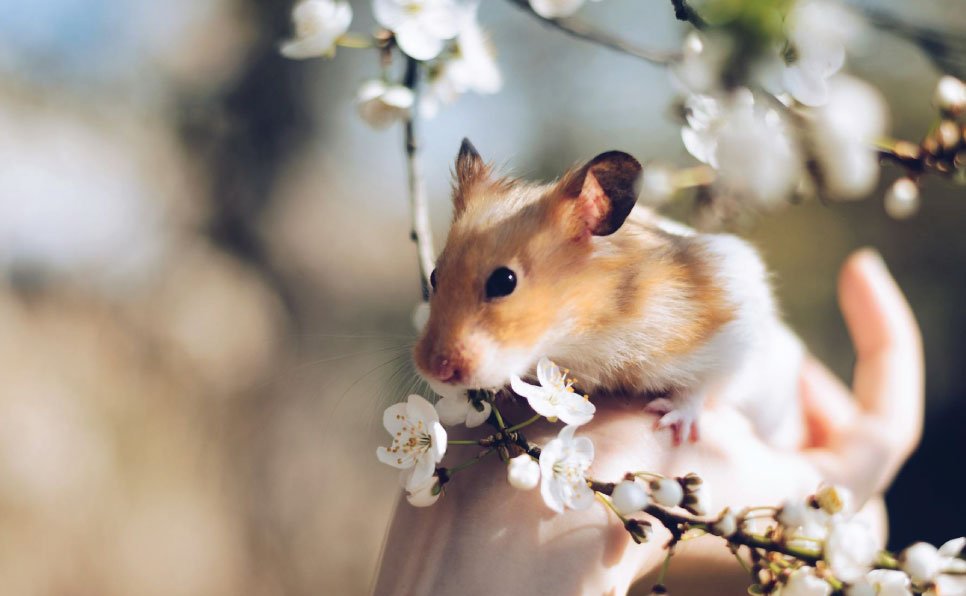
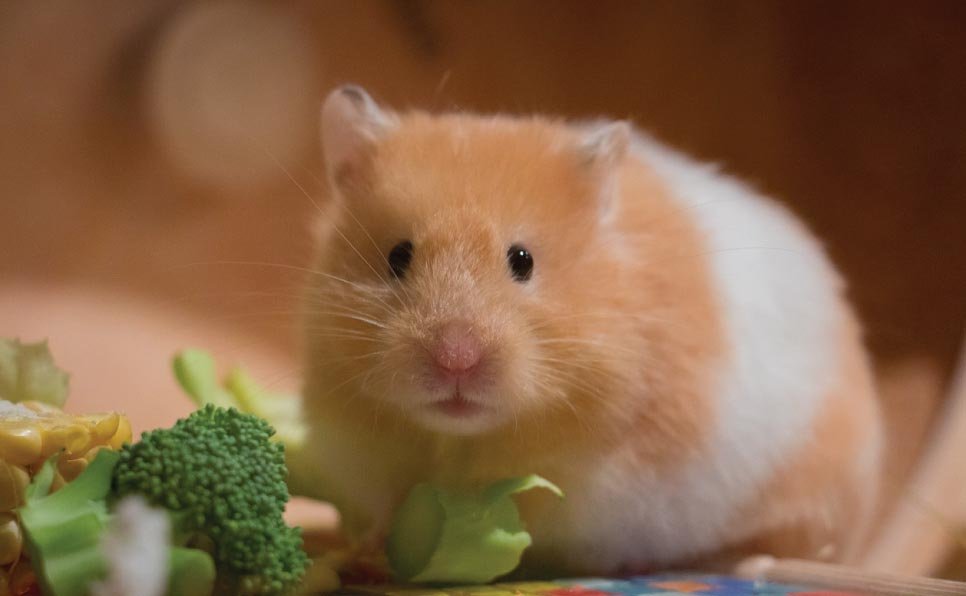


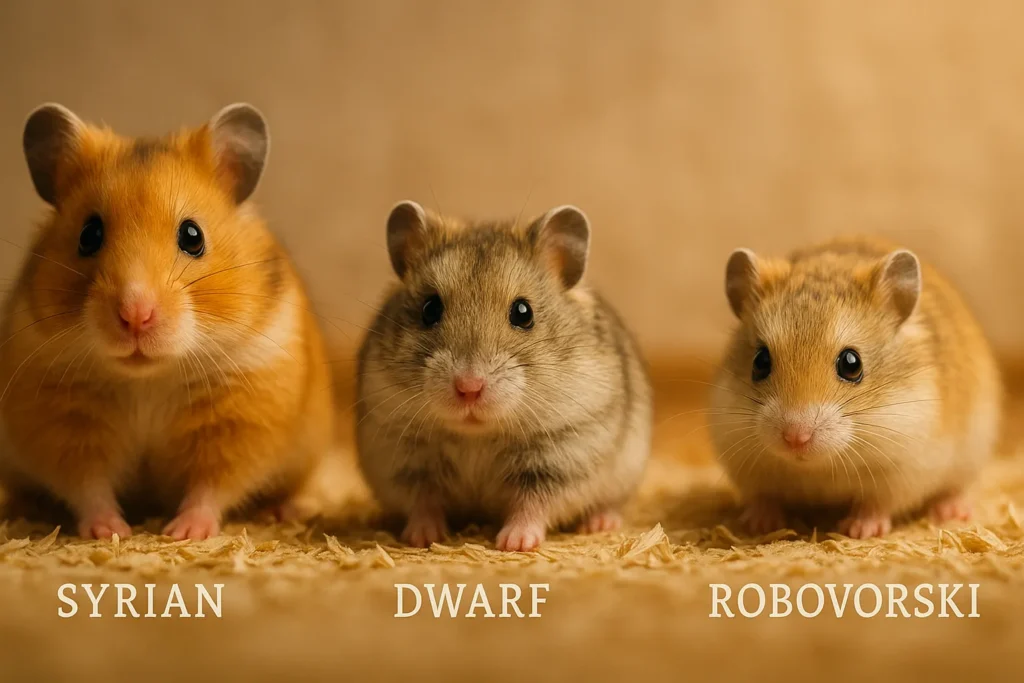
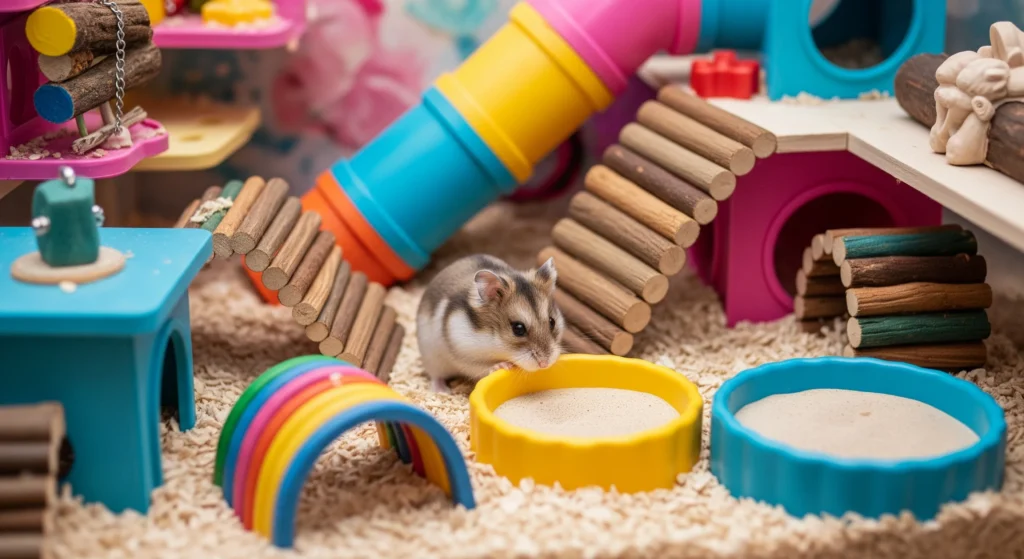
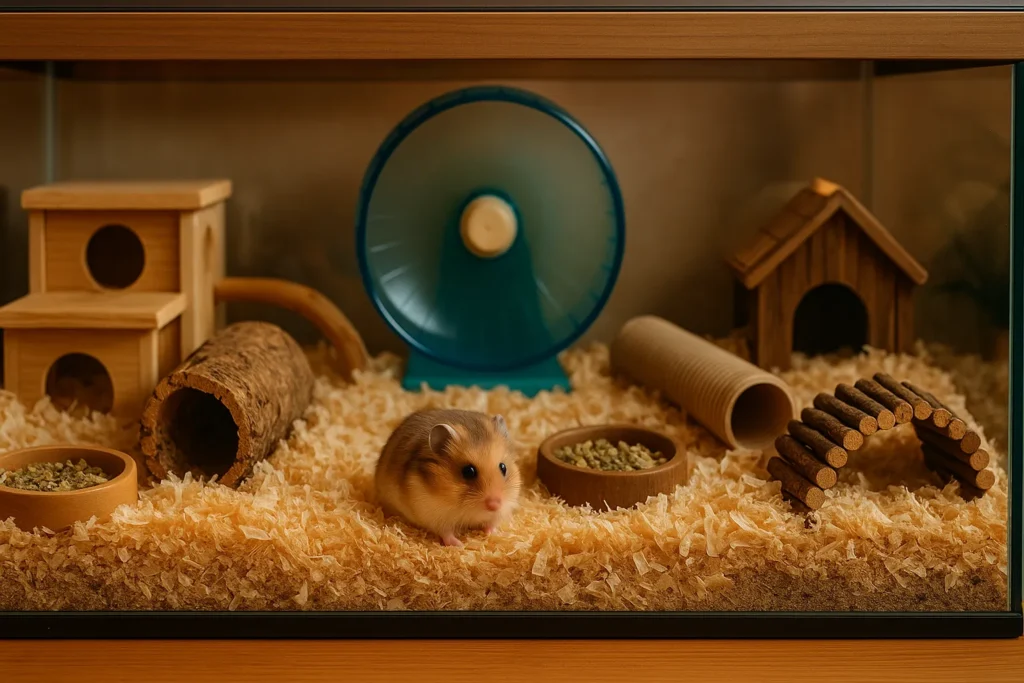

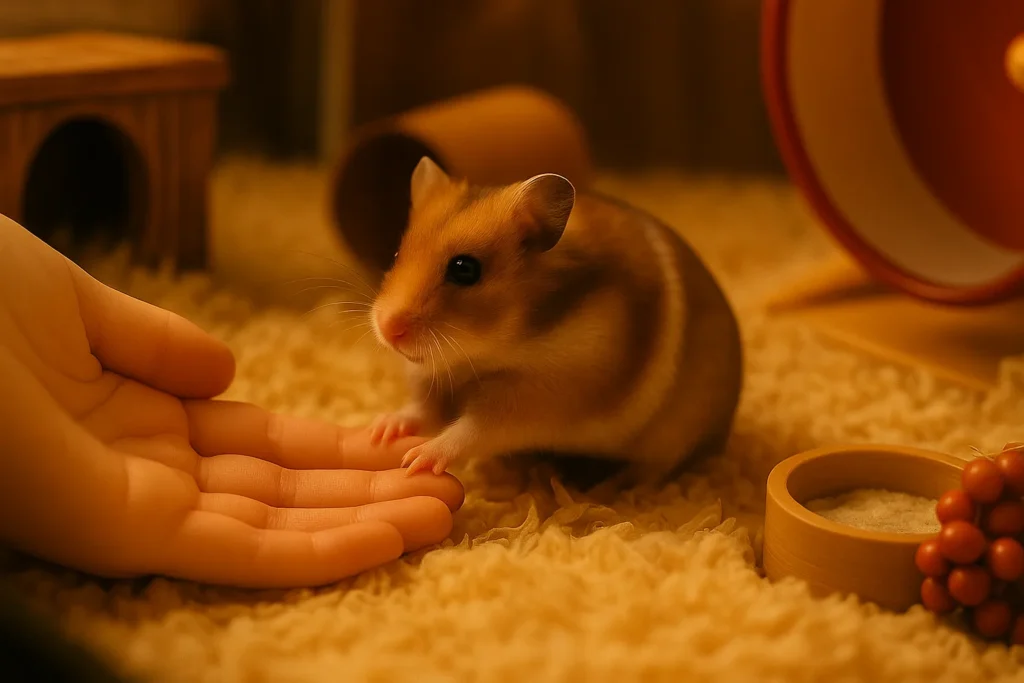
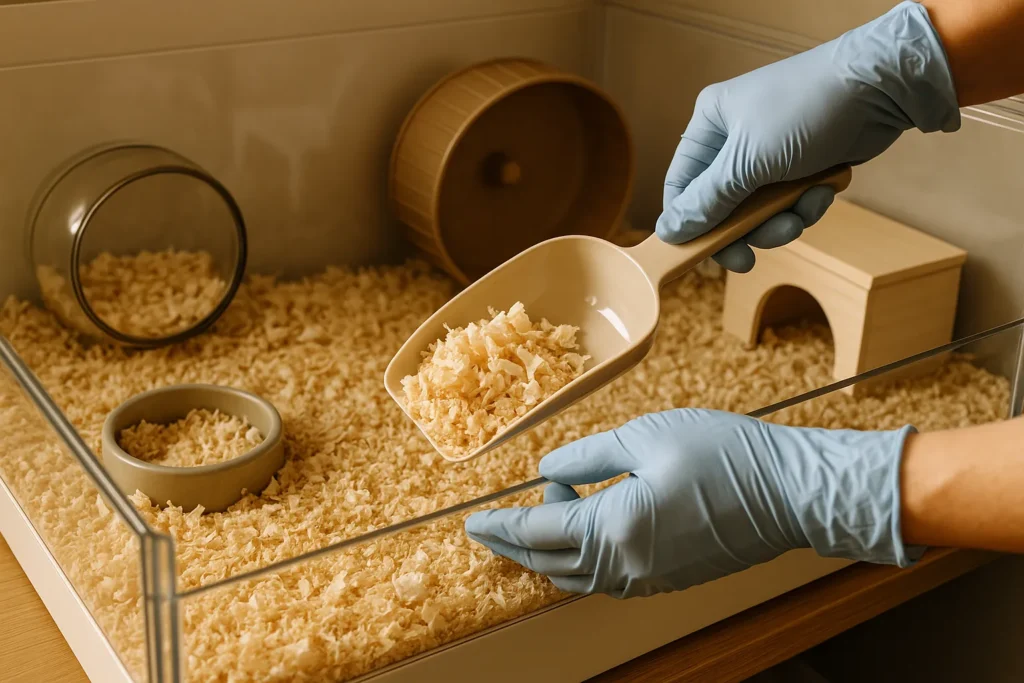





Getting your first hamster is such an exciting step! It’s amazing how much personality these little creatures have, and they really do bring so much joy. I love how this guide breaks down the different types of hamsters and their needs it’s so helpful for new owners. I’m curious, though, how do you know if a hamster’s personality will match yours before bringing them home?
Hi Clara G.,
Thank you so much for your kind words about my hamster care guide, I really appreciate you taking the time to share that 💕 And sorry for my late reply!
You’re absolutely right, hamsters have so much personality for such tiny creatures. It can be tricky to know if a hamster’s personality will match yours before you bring them home, since a lot depends on their individual temperament, age, and how they’ve been handled before. A good tip is to spend a little time observing them in their enclosure if possible, some hamsters are naturally more curious and active, while others are shy or more laid back. Also, species can give you a clue: for example, Syrian hamsters are often more independent and better as solo pets, while dwarf hamsters can be a bit more social (though still need careful handling).
No matter which hamster you choose, patience and gentle handling go a long way in helping their personality shine and building a bond that feels right for both of you.
Thanks again for your lovely comment, I hope you and your future hamster have a wonderful journey together!! 🐹✨
Warmly,
Celeste from Petsweetjoy 😊